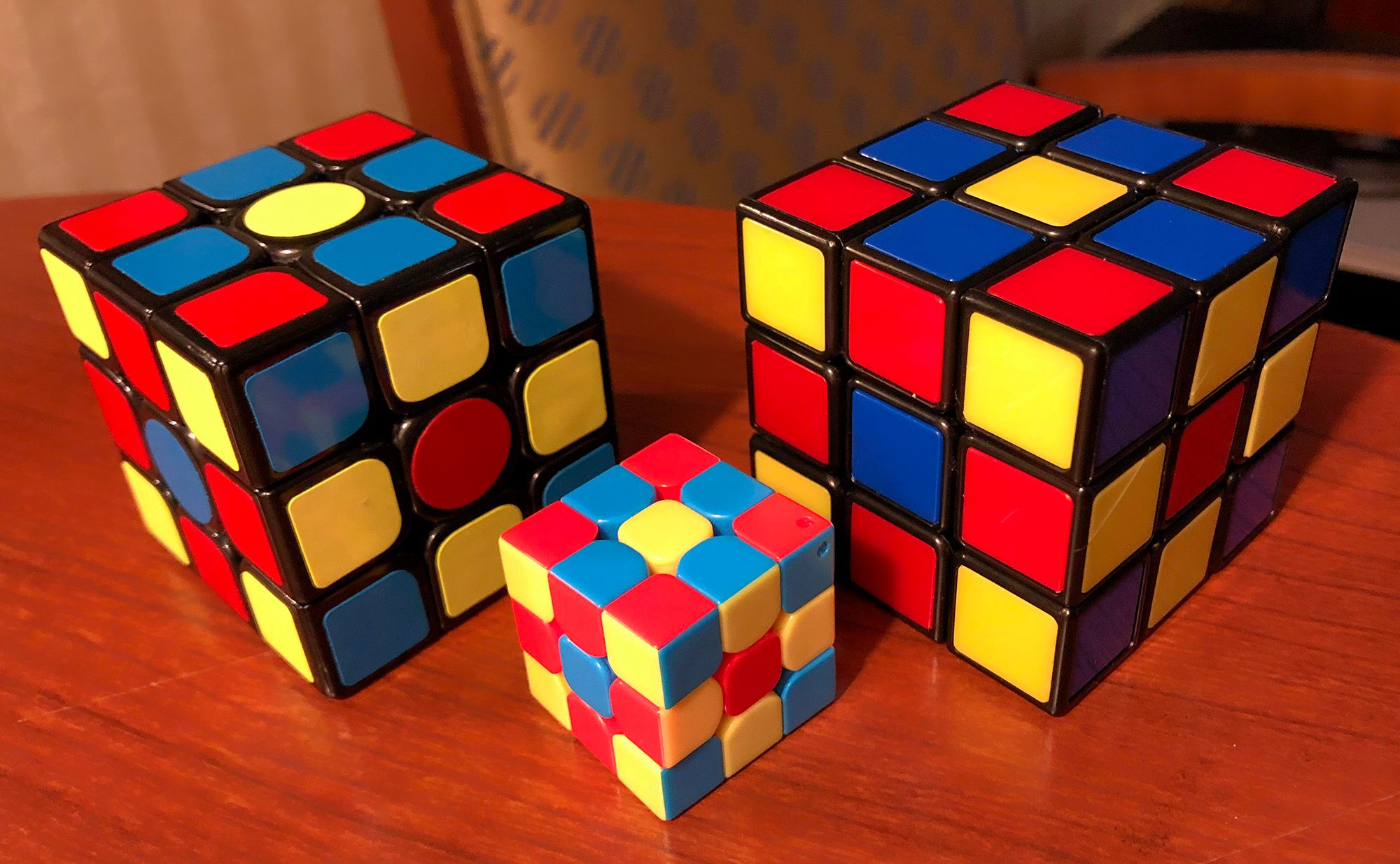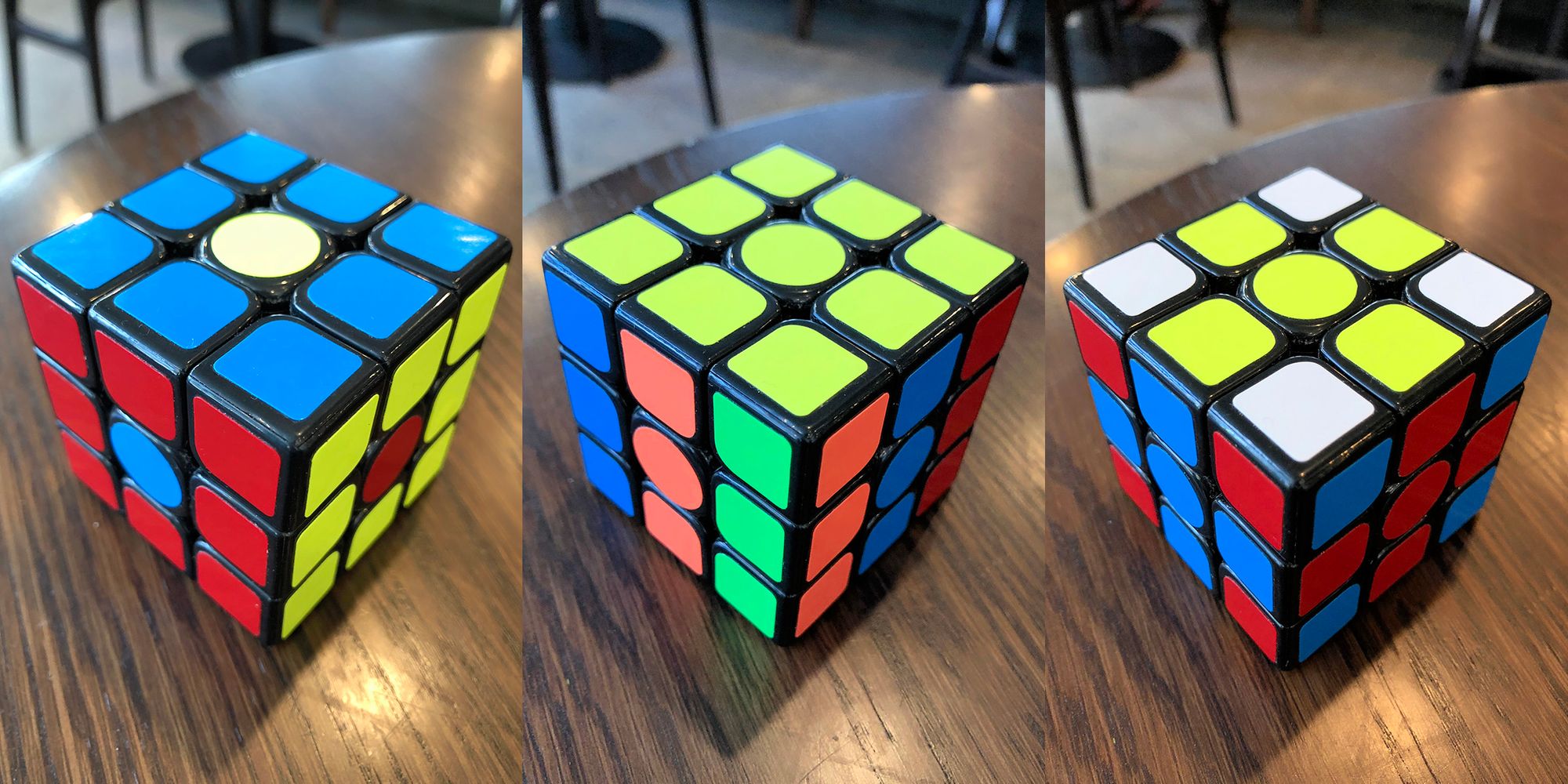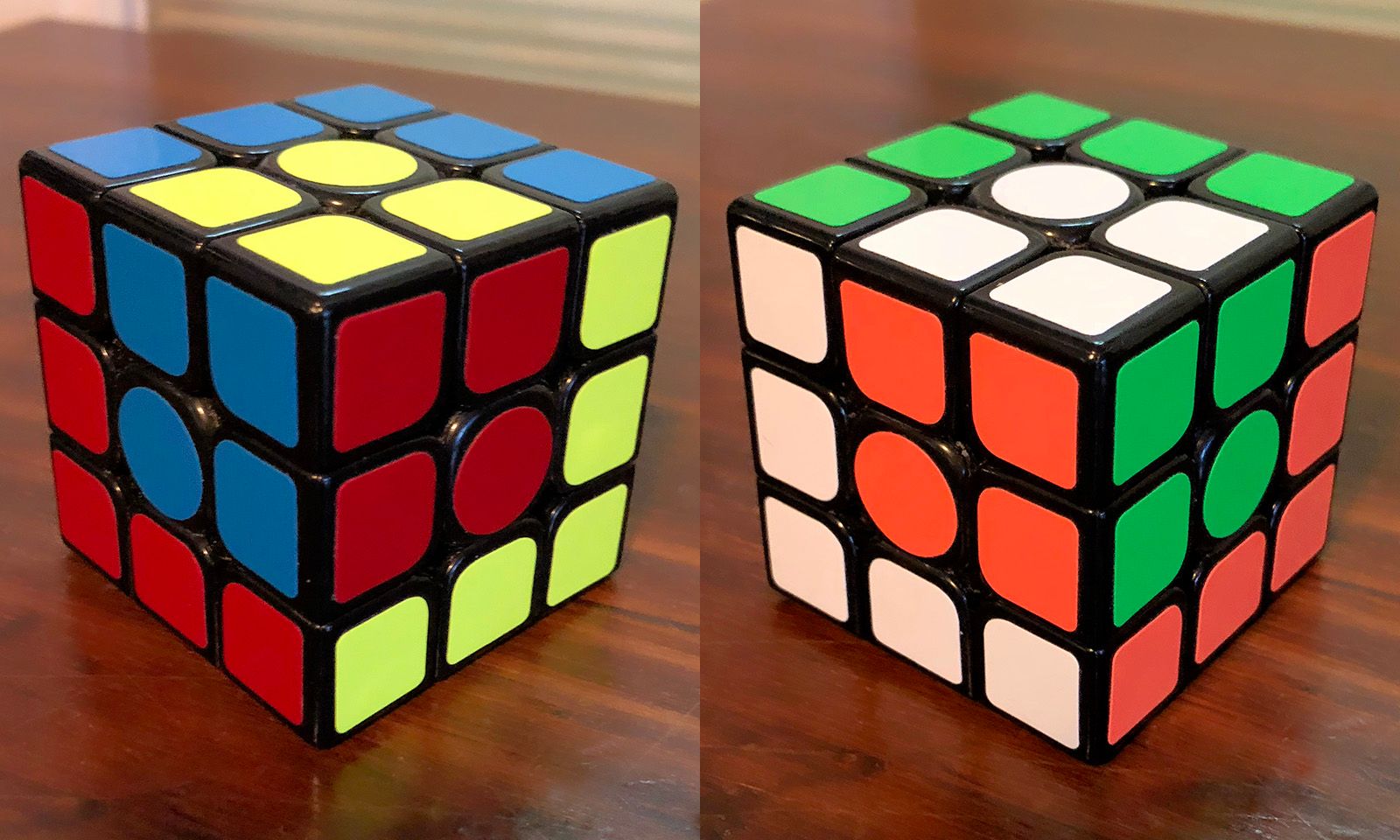Rubik's Cube

Like many people, I was obsessed with Rubik's cube for a while when it first came out. Then, after not solving one for over 30 years, I've recently become re-acquainted with it. A lot has changed.
The cube itself is still the same, of course. It still has 43,252,003,274,489,856,000 possible permutations (more than the number of grains of sand on Earth), and figuring out how to solve it by trial and error is still beyond the creativity and patience of most mere mortals. But speedcubing has become extremely competitive, and the current world's record is a mind-blowing 3.47 seconds!
Here's a nice close-up video of Feliks Zemdegs's 4.73 second performance a few years ago, made all the more entertaining by the reaction of the prior world champion champion who happened to be sitting right next to him:
What speedcubers do is fundamentally different from the beginner's approach to solving the cube; they are truly playing an entirely different game. The person most responsible for the rise of speedcubing is Jessica Fridrich, a Czech professor who became obsessed with Rubik's cube (and the mathematics behind it) in 1981. In early 1982 she won the Czech championship with a time of 23.55 seconds. She pioneered a technique known as CFOP, which stands for Cross, First 2 layers, Orient last layer, Permute last layer. You can find her description of the technique here: http://www.ws.binghamton.edu/fridrich/system.html. Nearly all of the most competitive speedcubers use CFOP or a variation of it. I've not yet learned CFOP, but I plan to learn it soon and will blog about the experience after I do.
In this blog post, I'm going to share a few few thoughts on how to approach learning to solve Rubik's cube, for those who've never done it before. I believe anyone can learn to solve Rubik's cube, as long as you approach it with a little patience and humility. That means using the basic beginner algorithms that put one piece in place at a time, and following instructions that are known to work.
I won't cover the specific moves/algorithms here, because those are thoroughly documented in many places already. For example, here's a good step-by-step summary of the most common beginners algorithms: https://www.rubiks.com/how-to-solve-rubiks-cube.
Equipment details
The original Rubik’s Cube ® manufactured by Hasbro is clunky, noisy, hard to turn quickly, and easy to break. A variety of competing speed cubes have come out over the years, featuring smoother action and rounded off center posts that allow you to move quickly without breaking anything. The one I have is the Eyeopener brand, but they're all pretty similar.
If you want a smaller cube that you can easily carry around in your pocket or hang on a keychain, most of those are junk but I've had good results with the X Hot Popcorn model. It has a smoother action than most other miniatures, and I've never broken mine.
Basic instructions are usually packaged with the cube, and the beginner algorithms can vary slightly but they all follow the same layer-by-layer strategy, where you get the bottom layer done first, then the middle layer, and finally the top layer.
Learning to solve the cube
I solved the cube many times in the 1980s, using the basic algorithms from the original Hasbro instruction manual. Then when I picked up a Rubik's cube last month for the first time in decades, I realized I had an opportunity to try to learn the basics in a systematic way.
It's tempting to start by plowing through all the steps so that you can have the satisfaction of solving the cube as soon as possible, but I think that's counterproductive. There are so many different steps and transformations that you'll mix them up, so instead I think it's better to focus on memorizing the steps in a methodical way. Learn one or two moves, use them until they're second nature, then repeat.
Here's how I memorized solving the cube by devoting an hour or so to that strategy four days in a row:
Day 1 – solve the bottom layer
All the beginner algorithms start out the same way: create the "white cross" on the bottom (which most people can do intuitively), and then put the four bottom corners in place with a simple 3-step move for each one. When you're done the entire bottom of the cube will be white, and the three edge faces on the bottom will match the center of each side of the cube. That's all there is to it: just go that far, over and over, until you've thoroughly memorized these basic steps.

Day 2 – solve the middle layer
After solving the first layer, the center of each edge on the middle layer is already in its proper position. So solving the middle layer simply means getting the four corners in their proper position and orientation. There are two 8-step algorithms to learn, and then you need to learn how to tell when to use which one. Do this over and over on day 2 until you have it down.

Day 3 – solve the top (yellow) face
The goal here is to make the entire top face yellow, while leaving the two bottom layers in their correct configuration. Don't worry about getting the top corners in their correct positions yet, just get the top face yellow. Do this over and over, then get a good night's sleep, and tomorrow you're going to be able to solve the cube!

Day 4 – get the top corners in position
This final step is the longest series of moves you'll need to memorize. There are are a few variations, but they're all based on the notion of rotating or swapping the top corners into position. For example, I use the rotate-3-corners method covered in Dan Harris's book, and for that one there are two different 20-move series to learn. Once you've master this step, you've mastered the cube and can solve it every time.

Pretty patterns
After you learn to solve the cube, a fun variation is to create various patterns instead of making each face of the cube a single color. Note that not all patterns are actually possible, so if you think up a pattern you may find that it can't be achieved. There are web sites devoted to known/achievable patterns, and this one is pretty good: https://ruwix.com/the-rubiks-cube/rubiks-cube-patterns-algorithms/
The standard approach for creating these sorts of patterns is to solve the cube first, then transform the solved cube into a pattern using a memorized set of moves for each pattern.
I've not done it this way myself, however. Instead, I like to simply study a photo of a pattern, and then build that cube configuration from the bottom up, using the same basic moves I use for solving the cube.
The tradeoff is that I don't need to memorize any new patterns, Instead, I envision the pattern I'm trying to create and then build it from the bottom up using the algorithms I already know. It's about visualization instead of memorization – to each their own, but that's the approach I find most satisfying.
Here are a few of my favorite patterns:




If you approach these patterns by building each one from the ground up rather than memorizing a "trick" to get there, you are honing the skill of cloning any possible pattern. To put myself to the test on this, last week on a long flight I asked my wife to shuffle one cube, then I set out to clone that randomly shuffled cube.
It was an interesting exercise. You have to really focus on every facet of every piece, and that gets extremely complicated as you near completion of the cube. It's easy to mess things up, and I had to start over after several minutes. But eventually I got it done in about 15-20 minutes total, and had two identical random cubes:

This is a good example of the flexibility of learning to create patterns from scratch, rather than memorizing a specific set of steps for each pattern.
